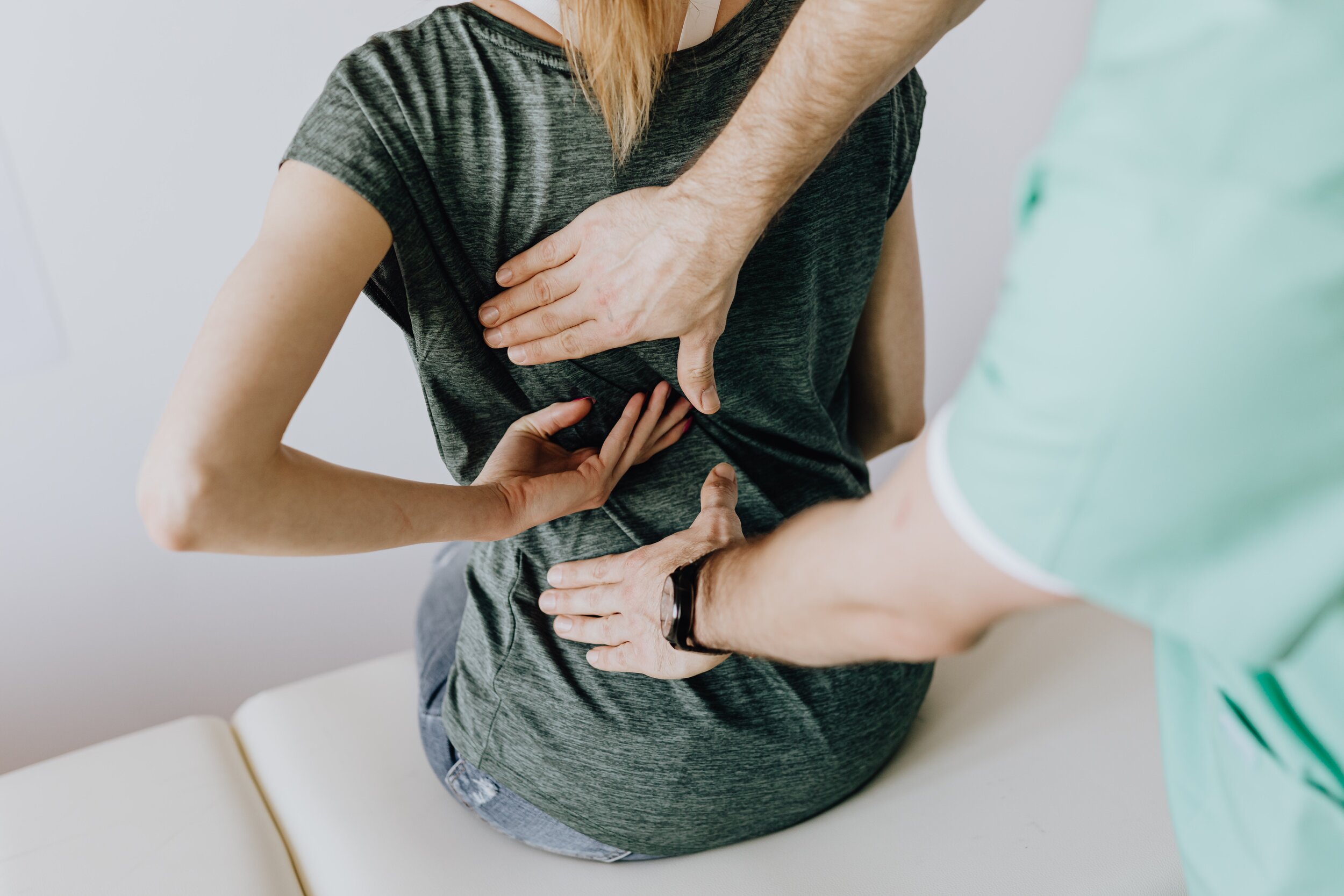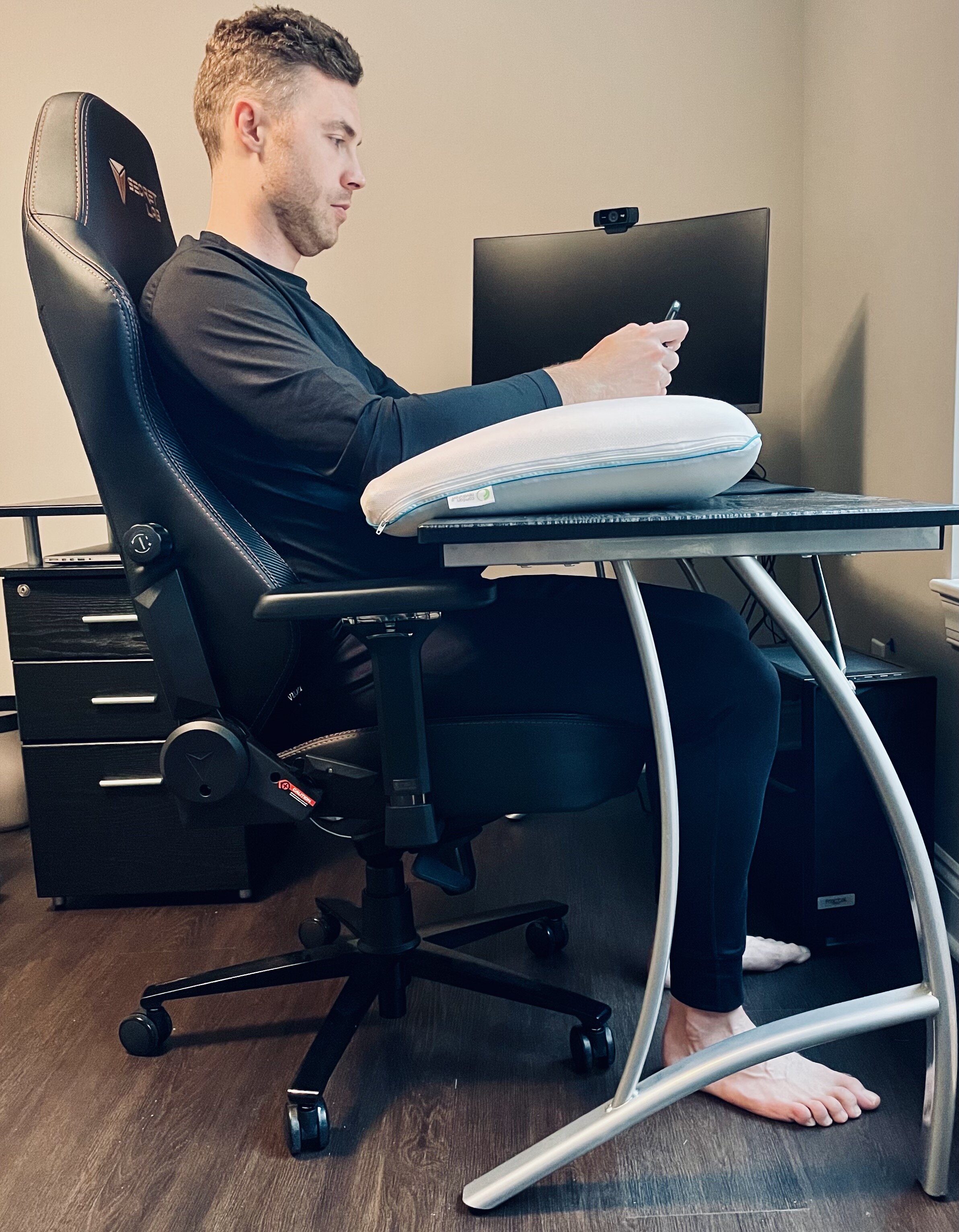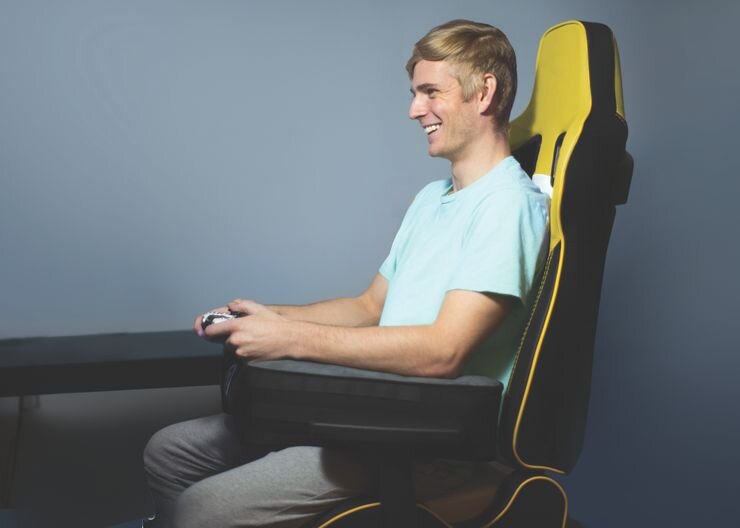Full Bars: Healthy Mobile Gaming
Mobile gaming has come a long way from the days of playing snake on my Nokia or Angry Birds slinging across our screens. We have seen the tech advance in the space to allow games like Pub G mobile, Free Fire, and Wild Rift to explode onto the scene.
The accessibility to mobile gaming has also never been easier, and we continue to see an upward trend with no signs of slowing down. This accessibility is great for gamers but can have detrimental effects on our bodies if we’re not careful.
With this post, my goal is to give a quick background on mobile gaming, common injuries that we see with mobile gaming, and what you can do to about the pain.
Having pain while we play is not only annoying but will also affect our performance in-game. Performance might not matter for most, but for the aspiring pros or gamers trying to climb, performance matters.
I’ve enlisted the help of a few experts in the mobile gaming space.
The first is Adhika Dyaksa Prabaswara, the co-founder and Head of Business Development of gspace.id, a startup that solely prioritizes helping the esports community in Indonesia. Gspace’s endeavors include incubating teams, esports digital marketing for brands, community building, and events.
Next is Rabia Sayal, who is a leading gaming and Esports journalist in India. She is also one of the lead writers at both gamepur.com and gamingonphone.com, among other outlets.
Finally is the mobile gaming star Grant the Goat, who has amassed millions of followers and subscribers across various platforms. He was able to add a player perspective on injuries and common issues that arise while playing on mobile.
Mobile Gaming Snapshot
(photo credit to EGB.com)
Mobile gaming’s reach in NA and EU pales compared to the SE Asian region and South America markets. I know many of my regular readers may not be familiar with titles like Free Fire, but I promise you they are massive. According to Newzoo stats, the mobile gaming market was north of 75 billion last year. That’s more than half of all gaming revenue encompassing all platforms.
Devices vary from player to player, with devices ranging from the S6 tablet as Grant uses to mobile phones like most Rabia’s readers in India. OS also differs throughout the mobile ecosystem. Both Adhika and Rabia agree that Android is in the majority (more accessible and cheaper alternative), but the pro and aspiring pro players prefer iOS. This preference is based on the stability of the platform and the overall performance of the devices.
Gamers are spending a ton of time on these devices. Throughout my interviews, I was getting ranges from 1-4 hours (Grant) to upwards 8+ hours (Adhika and Rabia). That’s a significant amount of time and energy to invest in something.
So why would you not want to improve your performance and overall health?
That is the reason I wrote this article and why it’s vital for you as a gamer/reader. So, let’s take this knowledge journey together.
Common Mobile Injuries
My goal with this article is to provide a snapshot of common injuries and treatment in order to make it digestible, as I doubt most of you want to read a novel. With each of these conditions, I will link to articles that I’ve previously written that go more in-depth.
There are a few overarching themes with all of these injuries that I want you to grasp off the bat:
Load Management
This term is thrown a lot in performance, but many times never explained to the reader. My perspective is simple. When the user begins to feel a performance issue and/or pain, I advise stopping play to address the underlying cause.
Once we have a baseline for load amount, the rehab begins involving targeted exercise, heating/icing, and finding other means of improvement (watching VODS, watching experts on Youtube, etc.)
Simply telling an athlete to rest and quit gaming isn’t the answer, nor does it solve the problem. The tissue should handle the stress; therefore, we need to boost the tissue’s endurance/resiliency by implementing other means of improvement from above.
Example: The player feels performance issues after one hour of playing. Following that first hour we began to work on endurance based exercises involving the irritated tissues, icing or heating, and other modalities. Two weeks following we come back to the player to see if the play time as increased before arriving at the pain. If so, then we’re on the right track; if not then we need to reassess the injury.
Icing and Heating
Most people never think to heat a towel or grab frozen veggies to treat their injuries, but these simple remedies work. Icing or heating an injury is both injury and tissue-specific.
I cover gaming pain more in-depth here. When in doubt, I suggest icing for sore, achy, throbbing, and acute injuries. Heating if the tissue is stiff, tight, or more chronic in nature. Once again, every injury varies, so do your homework.
Gamer’s thumb
Gamer’s thumb, outside of the gaming community, is known as DeQuervain’s Syndrome (DQ). DQ is the inflammation/irritation of the tendons of the thumb and the sheaths that surround them. The synovial sheath surrounds the tendons and provides a lubricating frictionless envelope for the tendons to move through freely.
The two tendons involved are the Abductor Pollicis Longus (APL) and Extensor Pollicis Brevis (EPB). The most common area for the irritation to occur is where they cross over from the wrist to the thumb. If you take your thumb and draw it back towards you, these two tendons will pop up to create a small divot.
If you want to go more in-depth on Gamer’s Thumb, click here.
Treatment of Gamer’s thumb is a multi-pronged approach. The first is load management, or how much gaming does it take before the tissue is irritated. Once that is established, I recommend stopping play to ice massage or ice the area for a few minutes. Following icing, we need to begin building strength and endurance in the area. I’ll embed a solid starter video below.
Once again, my article from above will go more in-depth on treatment. The straining of the other fingers in the hand is similar when it comes to treatment (besides the targeted exercises, of course).
Low Back Pain (LBP)
Regardless of your profession or hobby, LBP is all too common in today’s society. Mobile gaming is no exception, as Grant and Rabia both agree. Low back pain can be from a multitude of factors from simple muscle strains, disc pain, sciatica, and/or lack of proper stability in the area.
Posture education is out there, but the vast majority is of it can be misleading. I see the “old school” advice to sit straight up and sit away from the backrest all too often. Both of which are wrong.
The ideal position for gaming (including mobile) is pictured below.
Takeaways:
Backrest approximately 100 degrees. Not straight up and down.
Arms are supported by the desk or armrest.
Back against the backrest of the chair, which allows the chair to do its job.
Head as neutral as possible. We need to be aware of forward head lean.
Feet flat on the floor or a rest if your legs are shorter.
Breaks also play a crucial role when limiting low back pain. I want to punch home the fact that you must take breaks. Every 30-45 minutes, you need to get up, grab a drink of water, a healthy snack, stretch, or get some fresh air. I don’t care what it is, but you need to change positions.
Movement matters. Physical activity has shown to be beneficial for gaming performance and decision making time and time again. Exercise should be a staple of your everyday routine, whether you are going for a walk, doing HIIT, lifting, or yoga.
I would highly recommend seeing a medical professional for guidance on targeted therapeutic exercise. Everyone will have different deficiencies, but here are a few I recommend for low back pain.
Neck Pain
Many of the points that we touched on with LBP apply here as well. Where you put your device and how you sit sets the tone for the muscles while your playing. Typically mobile posture is worse than PC or console since the device is small and supported by our hands well below eye level.
With the head tilted down, we tend to see a significant strain on the posterior neck muscles. This prolonged strain can lead to muscle spasms, headaches, and even numbness/tingling down into the arm.
Think of holding a 10lb weight out in front of you for 30 minutes. It would be brutal, right? Well, that’s what your neck muscles have to do throughout your gaming session. I assume you have a newfound respect for your neck (that rhymed!).
For a deeper dive into neck pain, click here.
Our goal is to bring the device up to eye level as much as possible. Whether by sitting at a desk (in proper form) or propping the device with a pillow or a Scuf Exo. I’m a big fan of the Exo as it supports the arms, provides an elevated position to ease next strain, and will provide a softer surface for the forearms compared to a typical desk.
Scuf EXO
Eyestrain
Ok, so the picture above might be a bit dramatic, but it’s how I feel after a long gaming session. The truth is that eyestrain/pain affects us all; whether we are gaming, working, or relaxing, it’s usually in front of a screen. If you are looking to boost your performance, you know that your gameplay slips as your eyes become fatigued.
Both Rabia and Adhika stated that eye strain is a significant problem when it comes to mobile gaming. Adhika went a step further to say that he knows some players who experience dizziness after playing for more extended periods.
THIS SHOULD BE A RED FLAG GAMERS THAT YOU NEED A BREAK!
My caps lock wasn’t on by mistake. This is a call that you need to be mindful of the pain you experience gaming and learn how to address it. Rather than bore you with more reading, I’ve put together an infographic that will summarize screen tips for your eyes much better.
Below is an Eye-dealic infographic I put together with Eyepromise. They make supplements that are specific for screen users and gamers. I’ll link them above.
Clutch Tips and Products
The screen should be an arm’s length away.
Check that Posture (scroll up for the pic)
The screen brightness should match the brightness of the room
Check your phone size before you buy. Everyone has different hand sizes. One size does not fit all here.
Take productive breaks. Stretch, move, walk around, change positions, or go hydrate
Get moving with physical activity. Here’s an EZ workout that takes 20 minutes
Play at a desk and use a proper ergonomic chair. This will reduce pain and irritation as you game. My Picks: Herman Miller Embody, Haworth Fern, and Mavix
Warm-up before you game. You’ll play better, feel better, and be ready to roll. Here’s a video I put together
Promotes better ergonomics for mobile gaming
Better hand ergonomics over simply holding your phone
Great for manual therapy on tight, sore, stiff muscles
Final Word
Finally, if you are having pain, do something about it! Research, Ask Me, seek out a medical professional, and be proactive. Whether it is your dream, livelihood, or just a hobby, it’s vital that you do the short term work to make this a long term thing.
My approach to performance is based of six categories, how they are interconnected and how they’re dependent on one another.
Thanks for Reading,
Dr. Drew
**link pic
*exo pics
*include the link to scuf site
For a deeper dive into neck pain, click here.
Eyestrain
*eye strain pic
Ok, so the picture above might be a bit dramatic, but it’s how I feel after a long gaming session. The truth is that eyestrain/pain affects us all; whether we are gaming, working, or relaxing, it’s usually in front of a screen. If you are looking to boost your performance, you know that your gameplay slips as your eyes become tired.
Both Rabia and Adhika stated that eye strain is a significant problem when it comes to mobile gaming. Adhika went a step further to say that he knows some players who experience dizziness after playing for more extended periods.
THIS SHOULD BE A RED FLAG GAMERS THAT YOU NEED A BREAK! My caps lock wasn’t on by mistake. This is a call that you need to be mindful of the pain you experience gaming and learn how to address it. Rather than bore you with more reading, I’ve put together an infographic that will summarize screen tips for your eyes much better.
Below is an Eye-dealic infographic I put together with Eyepromise. They make supplements that are specific for screen users and gamers. I’ll link them above.
**Eyepromise link
**Staying Healthy infographic
Clutch Tips and Products
The screen should be an arm’s length away.
Check that Posture (scroll up for the pic)
The screen brightness should match the brightness of the room.
Check your phone size before you buy. Everyone has different hand sizes. One size does not fit all here.
Take productive breaks. Stretch, move, walk around, change positions, or go hydrate
Warm-up before you game. You’ll play better, feel better, and be ready to roll.
Play at a desk and a proper ergonomic chair. This will reduce pain and irritation as you game.
Scuf Exo
Backbone
Hyperice Mini
Finally, if you are having pain, do something about it! Research, ask me, seek out a medical professional, and be proactive. Whether it is your dream, livelihood, or just a hobby, it’s vital that you do the short term work to make this a long term thing.
*add contact link
Thanks for Reading
Dr. Drew
**link pic


















